Want to revitalize your yard? Mulch offers an easy and imaginative solution for beautiful landscaping. Discover 21 mulch landscaping concepts to revamp your garden and nurture your plants. Explore diverse styles and methods, from color palettes to textures. Learn how mulch can boost your home’s charm and visual appeal.
Raised Garden Beds with Organic Mulch
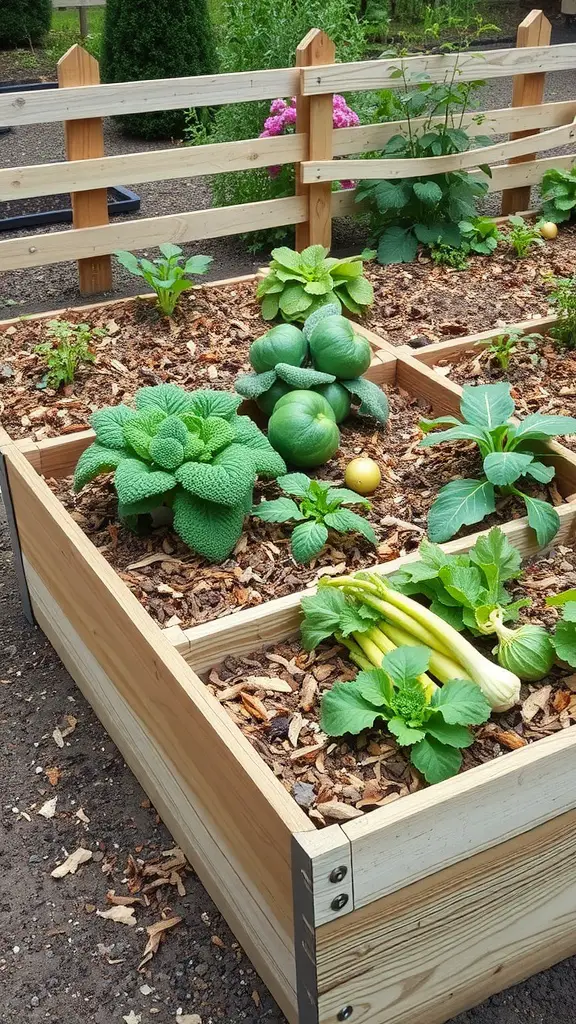
Elevated garden beds offer a functional and attractive method for cultivating plants. The image showcases a neatly arranged system featuring wooden frames. These frames divide the space into distinct areas for various plants. Wood chip mulch provides several benefits.
Firstly, mulch conserves soil moisture, decreasing how often you need to water. This is particularly useful during the hot summer. Secondly, mulch serves as a natural weed blocker. This allows your plants to flourish without battling unwanted weeds.
Lush green vegetables emerge from the mulch, a clear sign of healthy, thriving plants. This arrangement boosts your garden’s visual appeal. It also provides easier access, making gardening a more pleasurable activity.
Growing vegetables or herbs? Organic mulch in raised beds is an excellent choice. It boosts plant health and enhances your garden’s appearance.
Pathway Edges Defined with Decorative Mulch
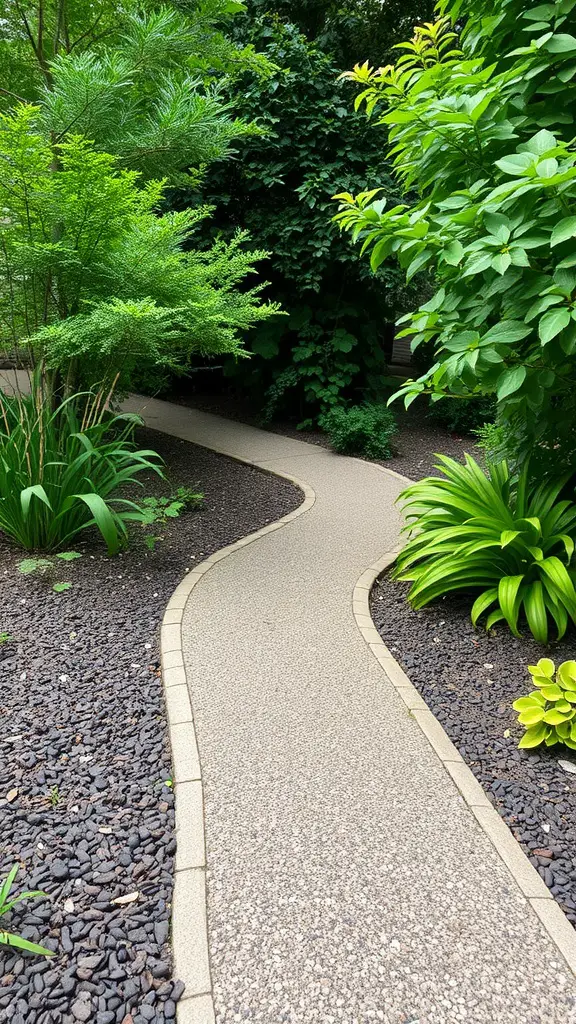
Elevate your outdoor living area with a stunning garden path. This photo showcases a curved walkway bordered by attractive mulch. The path features carefully placed, even stones, offering a striking visual contrast to the dark mulch around it. This design enhances the garden’s overall aesthetic in 2025.
Applying mulch to your garden pathways elevates their aesthetic and significantly reduces weed growth. This simple step ensures a neat and orderly garden. Vibrant plants bordering the path create a lively and colorful experience, transforming each walk into a revitalizing escape.
Explore various mulch types to enhance your garden’s aesthetic. Organic choices like wood chips or decorative stones can make your pathway stand out. Remember to maintain crisp edges. Clean lines define the space and guide visitors through your garden in 2025.
Mulch Around Trees for Moisture Retention
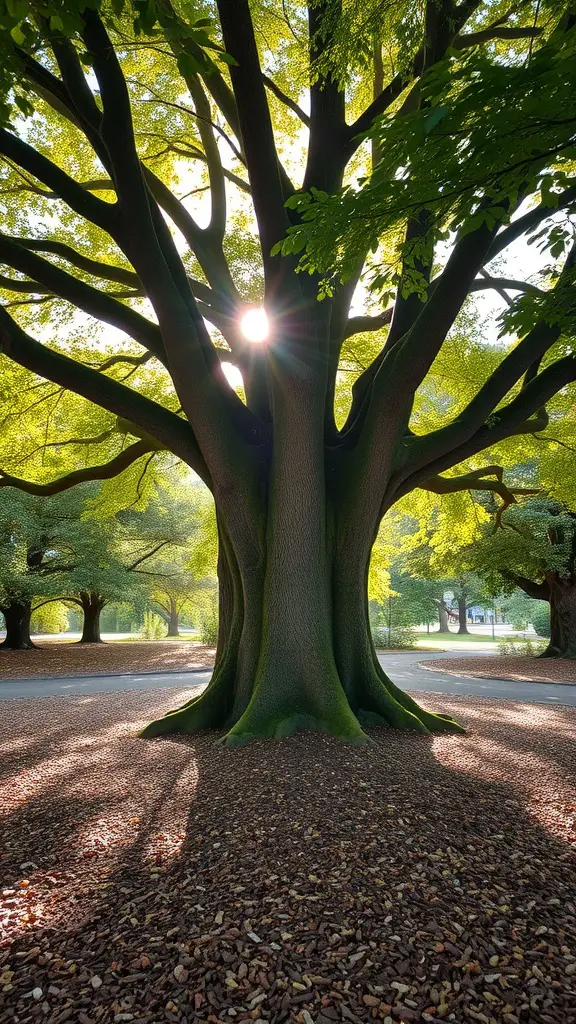
Maintaining tree health is crucial, and mulch is a great tool. This image shows a beautiful tree with a protective layer of mulch around it. This arrangement is both visually pleasing and highly functional.
Mulching trees is key for soil moisture retention. A generous mulch layer acts like a shield, minimizing water loss through evaporation. This ensures a consistent water source for your tree, promoting robust growth and vitality.
Beyond retaining moisture, mulch effectively controls weeds. Weeds steal vital nutrients and water from trees. Mulching helps prevent weed growth, creating a healthier space for your tree’s root system.
Organic mulch decomposes gradually, feeding the soil with vital nutrients. This natural decomposition boosts tree growth and fosters a thriving yard ecosystem. Mulch enhances aesthetics and provides unseen benefits below the surface!
Colorful Flower Beds Enhanced with Mulch

Vibrant flowerbeds inject vitality into any garden space. When combined with mulch, they form a visually stunning display. The image showcases radiant blooms in yellow, pink, orange, and white hues. These colors pop against the dark, fertile mulch. This contrast emphasizes the flowers’ beauty and enhances the landscape’s depth.
Mulching your flower beds offers numerous advantages. It conserves soil moisture, controls unwanted weeds, and enriches the soil as it decomposes. The dark mulch pictured provides an ideal backdrop, enhancing the vibrancy of the colorful flowers. For a natural aesthetic, consider using shredded bark or wood chips.
Design your flower beds with mulch-complementing color schemes. Combine flowers with similar shades for harmony. Alternatively, mix contrasting colors for a vibrant look. Layering various plant types adds depth and creates an inviting garden space.
Mulching boosts your garden’s look and its health. It’s an easy way to improve your landscaping. Get inspired and design vibrant flower beds now!
Rock and Mulch Combination for a Modern Look
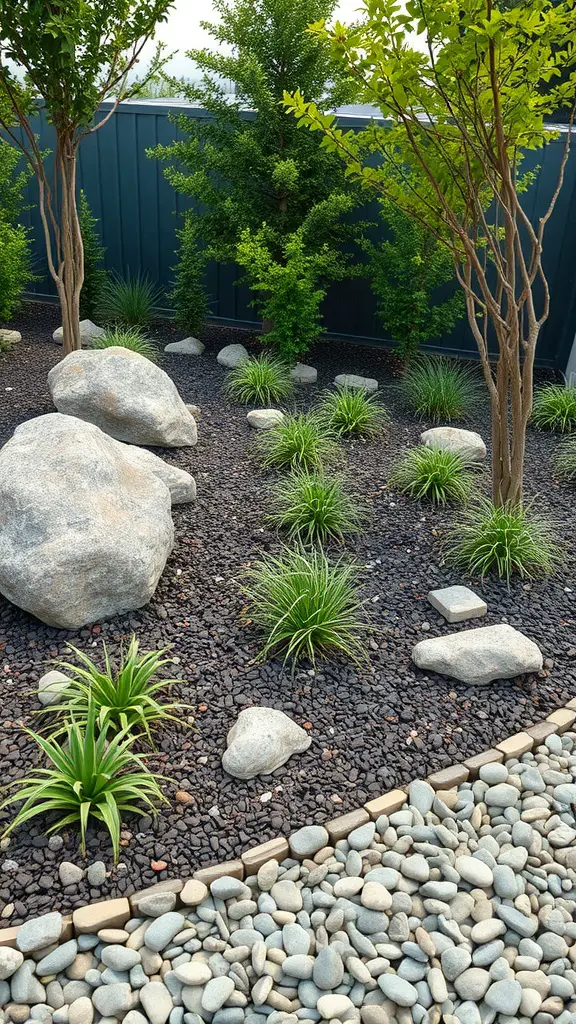
Elevate your landscape with a rock and mulch blend. This pairing offers a visually stunning, easy-care garden by harmonizing natural textures and hues. Observe how rocks and dark mulch complement each other, accentuating the vibrant green foliage.
Combining large stones with smaller pebbles creates visual appeal and texture. The contrasting dark mulch and light stones beautifully highlight the plants. This design offers a clean, contemporary aesthetic with minimal maintenance, ideal for a modern lifestyle.
Mulch is excellent for retaining soil moisture and controlling weeds, a truly practical solution. Rocks can also create defined borders, keeping your garden neat and organized. For visual interest, incorporate diverse plant varieties with varying textures.
This blend enhances your outdoor space and provides a tranquil retreat. Adaptable to any yard size, it’s perfect for creating your personal oasis.
Mulch as a Weed Barrier in Garden Areas
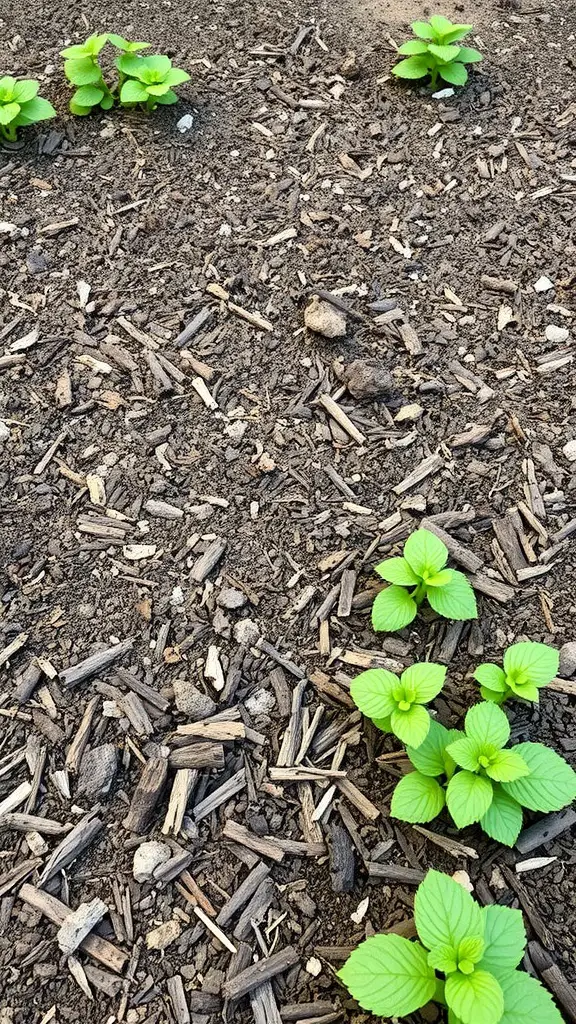
Mulch effectively blocks weeds in gardens, making upkeep easier and boosting visual appeal. The picture showcases lush green plants neatly arranged and surrounded by mulch. This arrangement looks clean and actively prevents weed growth.
Wood chip mulch forms a protective barrier on the soil surface. This barrier blocks sunlight, inhibiting weed seed germination. Consequently, your desired plants flourish, free from competition for vital resources like nutrients and water.
Mulch also helps retain vital soil moisture, especially during scorching summers. It effectively cools and hydrates plant roots. As mulch breaks down, it naturally fertilizes the soil, fostering a thriving garden environment.
Mulching your garden is a simple yet effective method. It boosts plant health and significantly reduces the need for weeding. This practical approach blends utility with aesthetic appeal, enhancing the beauty of your garden in 2025.
Wildflower Gardens Enriched with Mulch Layer
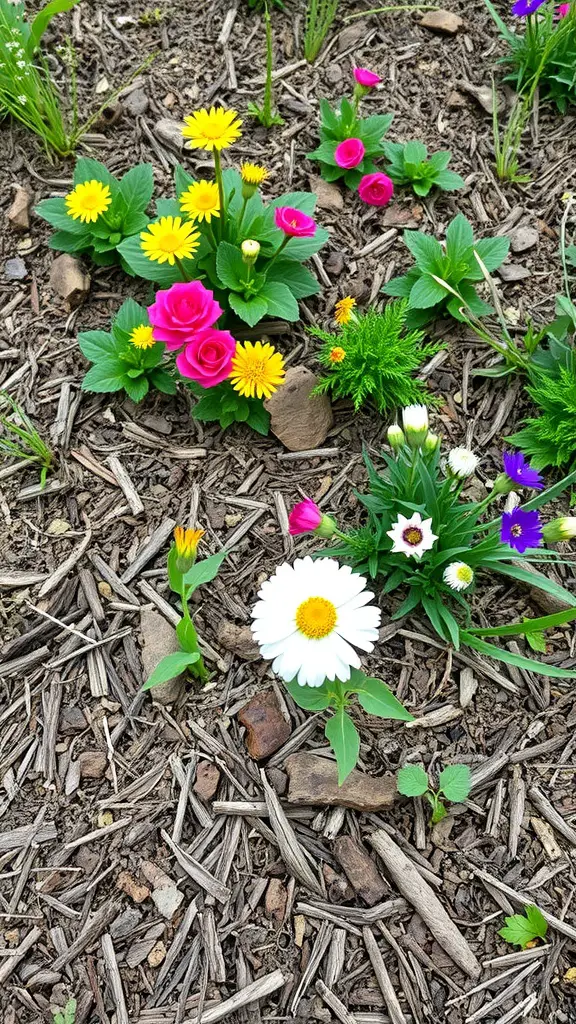
Transform your yard into a stunning wildflower haven with a mulch base. The picture showcases a colorful mix of blooms thriving in a natural mulch setting. This combination boosts visual appeal and promotes a healthy garden ecosystem.
Mulch, often made from organic matter such as wood chips, is essential for maintaining soil moisture and health. It effectively controls weeds, promoting the vigorous growth of wildflowers like daisies and roses. As seen in the image, the vibrant array of flower colors demonstrates how mulch creates a beautiful and supportive environment.
As you design your 2025 wildflower garden, carefully select your desired flower varieties. Combining perennial and annual blooms ensures a vibrant, evolving display all year. Mulch is key to maintaining healthy, thriving plants.
Furthermore, mulch can draw helpful insects to your garden. These insects aid in pollination and manage pests. This results in a healthier garden. As you admire your vibrant flowers, remember that a quality mulch layer supports both their beauty and their development!
Mulch Around Shrubs for a Finished Look
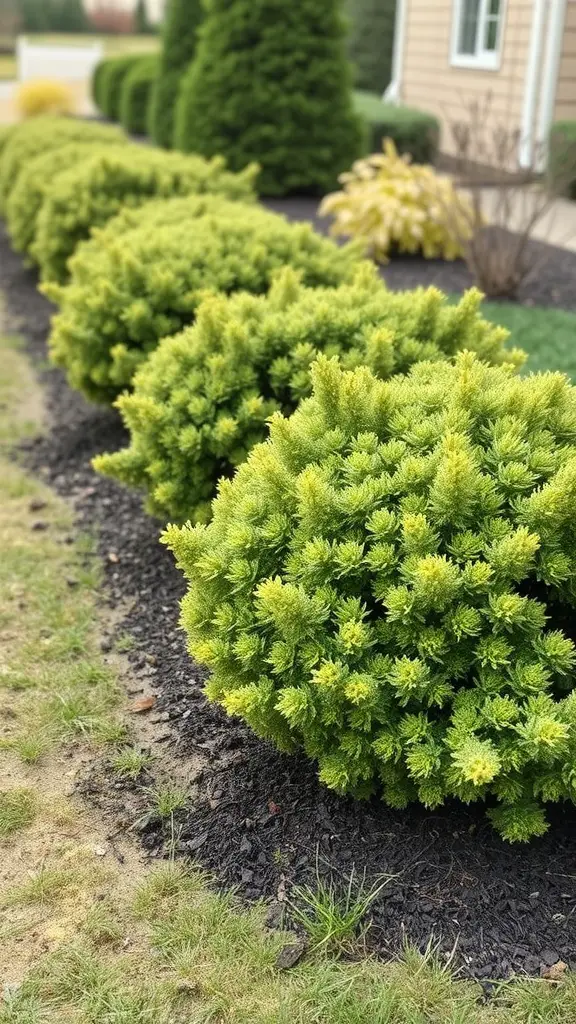
Achieving a refined garden aesthetic is simple with mulch around your shrubs. The picture displays vibrant green shrubs, expertly shaped and carefully positioned. A generous layer of dark mulch further enhances their beauty. This pairing introduces elegance and creates a sense of meticulous care in your garden.
Mulching offers several key benefits. It effectively conserves soil moisture, vital for shrub health. It also prevents weed growth, reducing competition for essential nutrients. The mulch’s rich color beautifully complements the foliage’s bright green, enhancing the plants’ visual appeal. It’s an easy method to improve your garden’s aesthetics.
Selecting the right mulch involves considering both its type and color. Natural mulches, such as wood chips or bark, decompose gradually, improving soil quality. Conversely, synthetic mulches offer a tidy appearance and greater longevity. The ultimate aim is to establish an attractive border that complements your shrubs, promoting their health and visual appeal.
Contemporary Zen Gardens with Mulch Accents
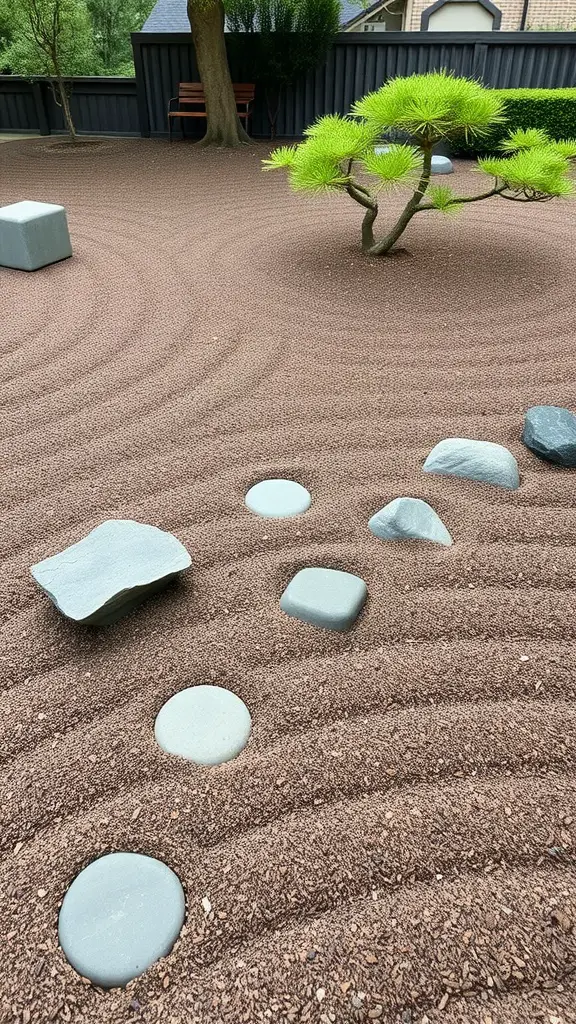
Zen gardens offer a serene escape through minimalist design. This photo showcases a modern Zen garden, emphasizing the soothing nature of mulch. Notice the carefully arranged, smooth stones resting on a bed of fine mulch, forming a tranquil and balanced composition.
The light brown mulch offers a beautiful contrast to the tree’s bright green leaves. This creates a lively and peaceful atmosphere. This natural mulch improves the garden’s look and helps the soil retain moisture, which is great for the plants.
The mulch’s soft curves create a flowing visual path through the garden. Adding elements like benches or extra stones boosts the garden’s functionality. These additions offer spaces for quiet thought or relaxation. This area encourages you to pause, breathe deeply, and appreciate nature’s beauty.
Mulch Paths for Natural Walkways
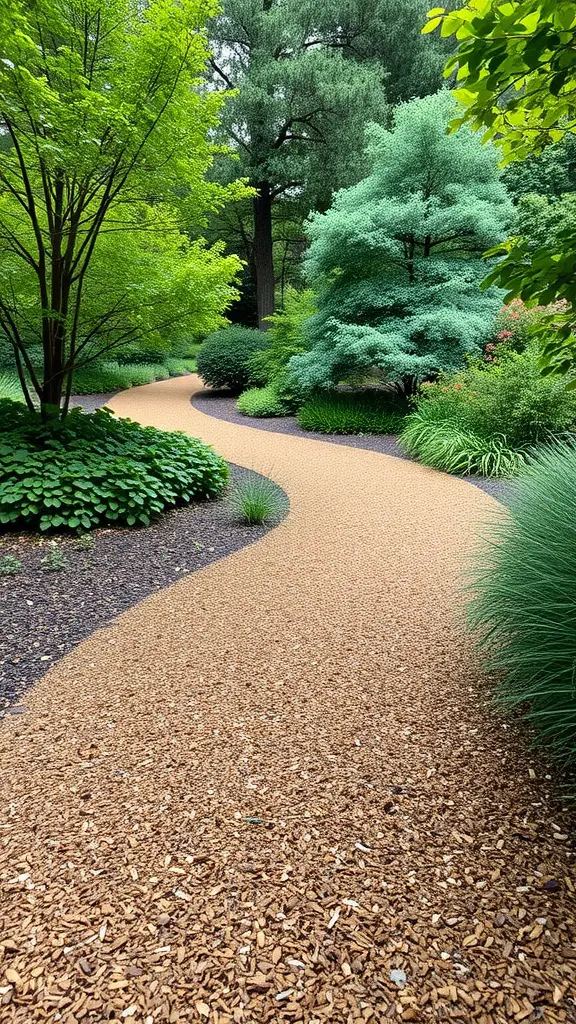
Mulch pathways offer a stunning and organic touch to any garden. The image showcases a meandering mulch path, perfectly integrated with the lush foliage. This type of walkway beckons exploration and adds a touch of rustic elegance to your outdoor space.
Mulching pathways is both practical and beautiful. It provides a comfortable walking surface and improves water drainage. The mulch’s earthy colors enhance the plants’ lush greenery, creating a unified landscape. Maintenance is simple: replenish the mulch as required to maintain a neat appearance.
Mulch pathways offer an environmentally conscious choice for your garden. Crafted from materials such as wood chips or bark, they repurpose organic waste and elevate your garden’s aesthetic. Regardless of your garden’s size, mulch paths can significantly improve the ambiance and visual appeal of your outdoor area.
Seasonal Color Changes with Mulch Choices

In 2025, mulch remains a landscaping essential, offering both functionality and aesthetic appeal. Observe the image above: varied mulch types provide a stunning backdrop for colorful plants. The deep blue stones complement the vibrant reds and greens, demonstrating how mulch accentuates seasonal shifts in color.
During spring and summer, vibrant green plants create a lively contrast against the dark mulch, revitalizing your garden’s appearance. As autumn arrives, colorful fallen leaves add warmth and visual interest, while the mulch maintains a consistent and appealing background.
Selecting the ideal mulch influences your garden’s winter aesthetic. Dark mulches evoke warmth against the cold season’s backdrop. Conversely, lighter mulches bounce sunlight, enhancing brightness even on overcast days. This adaptability ensures a visually appealing garden throughout the year.
Therefore, as you design your garden, consider how mulch selection impacts seasonal transitions. It’s more than just plants; it’s about creating a harmonious and visually appealing landscape.
Eco-Friendly Mulch Options for Sustainable Landscaping
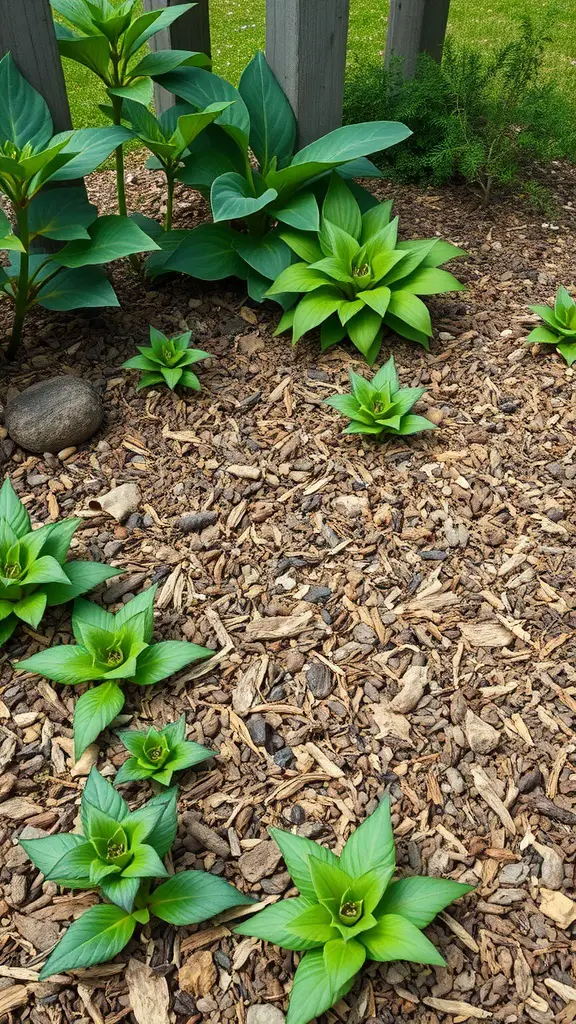
Opt for sustainable mulch choices to enhance your landscape and protect our planet. The picture displays a stunning garden bed. Lush green plants thrive, nestled within a layer of organic mulch. This eco-conscious approach creates an attractive and environmentally responsible space.
Boost your garden’s health with organic mulches such as wood chips or bark. As they decompose, they nourish the soil, improving its quality. These mulches also conserve moisture, suppress weeds, and create a welcoming environment for helpful insects. Furthermore, they add an attractive aesthetic to your garden beds!
Consider eco-conscious alternatives such as straw or grass clippings. These are usually easy to find and simple to incorporate into your garden. Composting them will maximize their positive impact.
Mulched Vegetable Gardens for Optimal Growth
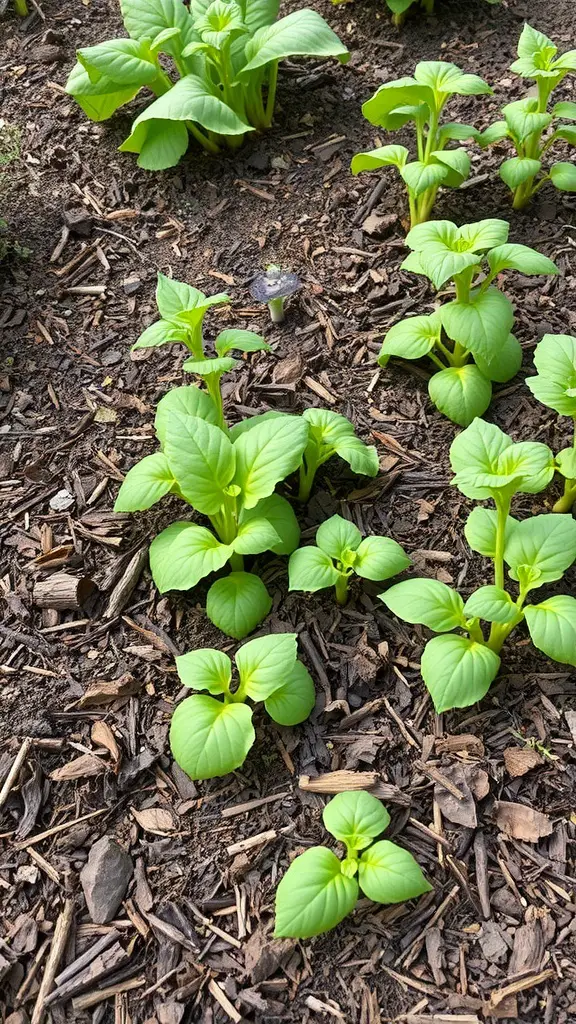
Mulching your vegetable garden is a straightforward and powerful technique for boosting plant health. The image showcases thriving, young green plants emerging from a bed of mulch. This arrangement is visually appealing and vital for the healthy development of these vegetables.
Applying mulch, such as wood chips or straw, effectively preserves soil moisture. This guarantees a consistent water source for your plants. It’s especially crucial for young seedlings with developing roots. A properly mulched garden reduces watering frequency, saving you valuable time and energy in 2025.
Furthermore, mulch effectively blocks weeds. It covers the soil, inhibiting weed development. This gives your vegetables a greater opportunity to prosper without rivalry. In this picture, the clear areas surrounding the plants demonstrate the mulch’s effectiveness. It enables these seedlings to grow well, free from intrusive weeds.
Furthermore, mulch enhances soil quality long-term. Its decomposition enriches the soil with organic matter. This boosts beneficial microbial activity, fostering a thriving ecosystem perfect for vegetable gardens.
Therefore, if you’re cultivating a small vegetable patch or designing an expansive garden, think about using mulch. This easy action promotes robust plant growth and a more fruitful garden overall.
Cottage Garden Charm with Mulch

Cottage gardens exude charm and a welcoming feel. Mulch is key to achieving this aesthetic. The photo showcases a beautiful scene. It’s filled with bright flowers and healthy green plants. This creates a warm and inviting space. Dark brown mulch surrounds the plants. This provides a visual contrast to the colorful flowers. It also helps the soil retain moisture.
Vibrant blooms, featuring radiant pinks and cheerful yellows, create a striking contrast with the mulch’s natural hues. This pairing boosts visual appeal and effectively manages weeds. Precisely placed stones define the garden path, inviting guests to explore its charming landscape.
Adding mulch to your 2025 cottage garden design is an easy way to enhance its appeal. It creates a refined appearance and boosts plant health. Select wood chips, bark, or straw for a rustic touch that perfectly matches the cottage style.
Maintaining Mulch for Longevity and Health
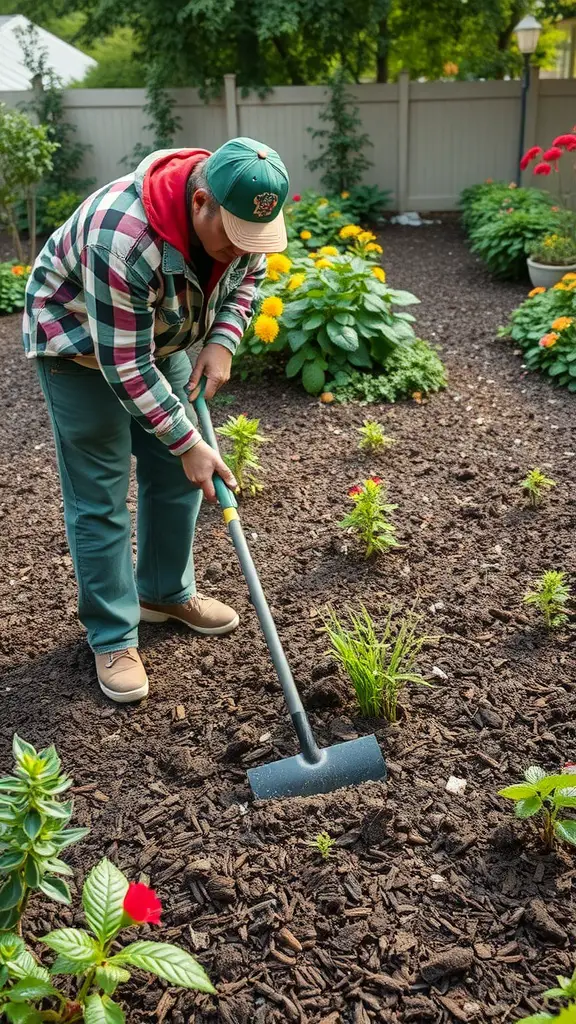
Mulch is vital for a thriving, healthy garden. The image shows someone carefully tending their garden, applying mulch around the plants. This active approach is key to a beautiful and healthy garden in 2025.
Consistent mulch upkeep stops weeds and locks in soil moisture. Think of it as a warm, comforting layer for your plants! Evenly distributing mulch boosts your garden’s appearance and shields plants from harsh temperature changes.
Regularly inspect your mulch for signs of decay. Mulch degrades over time, reducing its benefits. If you see thin or faded areas, replenish with a new layer. Maintain a mulch depth of 2 to 3 inches for best results.
Ensure mulch doesn’t touch plant stems. Over-mulching can cause rot. Leave a small space around each stem. This encourages better plant health and growth.
Finally, think about your mulch choice. Various materials offer distinct lifespans and advantages. Organic options, such as wood chips or bark, break down, improving soil quality. Synthetic mulches offer greater longevity but lack the same soil enrichment properties.

